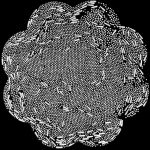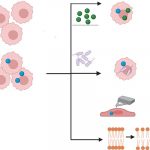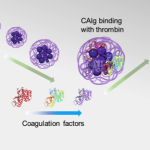Tejas G Murthy’s lab studies the mechanical behaviour of granular materials using computed tomography
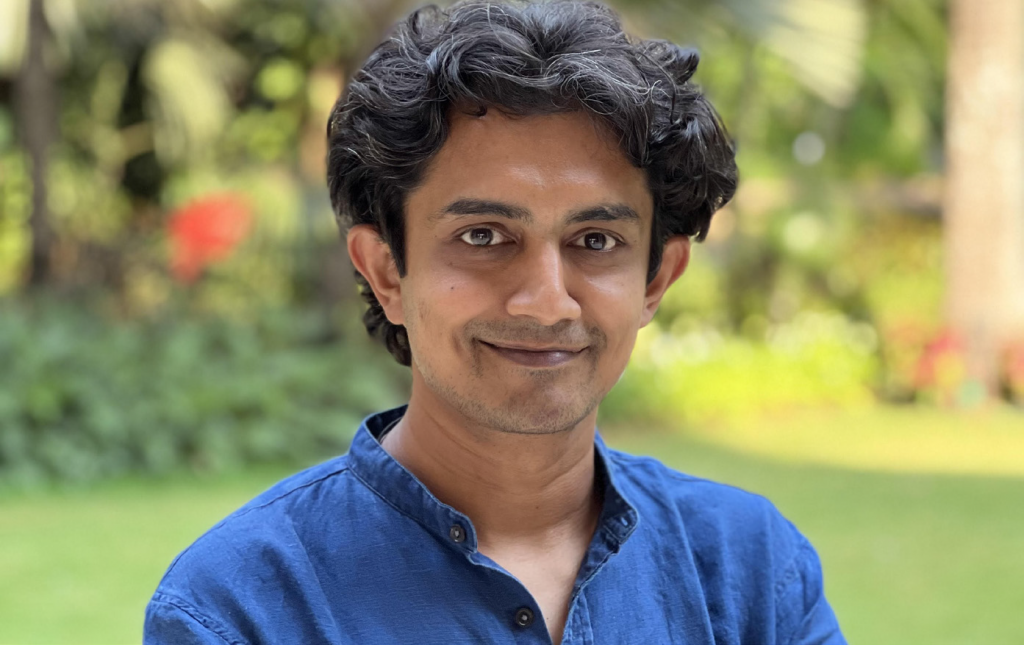
Matter is often classified into solids, liquids and gases. But if you think about sand, these lines begin to blur. Each particle of sand is a solid, but a collection of sand particles flows and takes the shape of the container it is poured into, like a liquid. Thus, the properties of a collection of particles can be very different from those of each constituent particle. Such properties that emerge only when the parts interact as a whole are called emergent phenomena. Granular materials such as sand, snow, or cement, which are a collection of solid particles (or grains) in close contact with each other, show a wide variety of such emergent phenomena.
“Granular materials are endlessly fascinating,” says Tejas G Murthy, Associate Professor at the Department of Civil Engineering at IISc. Using computed tomography (CT), his team investigates the microscopic structure of granular materials and how the interactions between the individual grains lead to their overall complex behaviour. Widely used in chemical, metallurgical, pharmaceutical and food processing industries, granular materials have generated significant interest among researchers across disciplines. “After perhaps fluids, granular materials are the most commonly handled system in industries. For example, food grains, cement, and pharmaceuticals are all granular materials. So, there is an interest in this field from several different disciplines,” explains Tejas.
Tejas’ interest in granular materials was kindled when he was a teaching assistant for a course taught by his eventual PhD advisor, Rodrigo Salgado, Professor at the School of Civil Engineering at Purdue University. In his early work, Tejas developed theoretical models to predict how the behaviour of a granular material emerges from the motion of the individual grains that constitute it. However, he needed experimental evidence to corroborate his theories. After getting tenured at IISc, he went on a sabbatical in 2017 as a Fulbright-Nehru fellow to the Georgia Institute of Technology. He spent a year there learning about CT techniques, which would later help his team gain valuable insights into the microstructural changes that take place in these materials under experimental conditions. Tejas also learnt about various image analysis techniques. “The most important part of tomography is the image analysis. It’s very easy to collect a bunch of CT images. Analysing the images is the hard part,” says Tejas.
In a recent collaboration with Vijay Natarajan, Professor at the Department of Computer Science and Automation, Tejas has developed a new segmentation algorithm to single out individual particles in the CT image of a granular material. When compared with conventional techniques, this algorithm has the ability to segment images of more complex geometries in a much shorter time, and provide better insight into the connectivity of the particles with each other.
The team now conducts experiments at the Cornell High Energy Synchrotron Source (CHESS) in Ithaca, New York, a high energy X-ray source used to obtain high-quality CT images. “These are massive datasets,” he says, referring to the CT images from CHESS. This has allowed the team to move from studying simple systems – such as a collection of spherical steel balls of similar shape and size – to probing highly complex systems with particles of different sizes, shapes and connectivity, which are more representative of real-world granular materials. The CHESS data also includes diffraction data, which allows the team to map out the forces at the contact points between grains. In a recent paper, they have shown that a small amount of such inter-particle forces can drastically change how granular materials respond when a load or force acts on a collection of them.
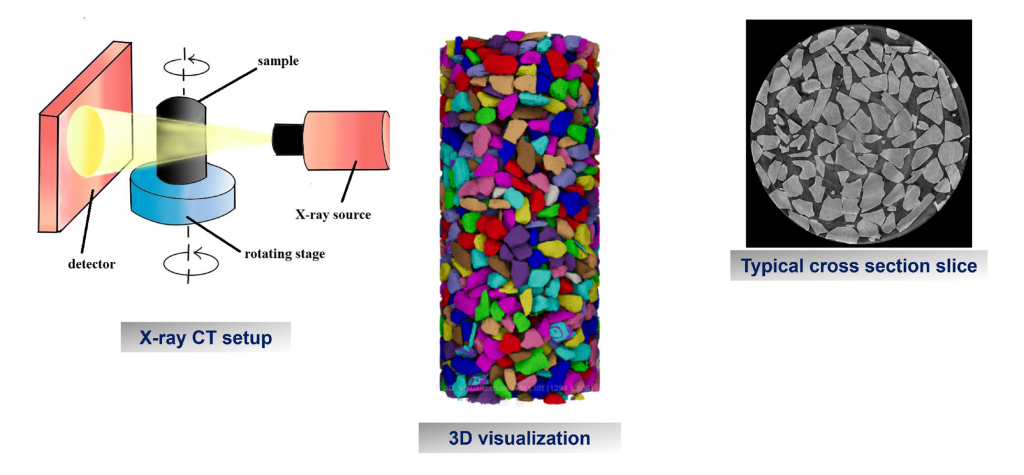
(Image: Manasa Bhat)
Tejas’ expertise in image analysis has led to an interesting offshoot – his collaboration with Hema Somanathan, Professor at IISER Thiruvananthapuram, on studying the web architecture of a species of social spider, Stegodyphus sarasinorum. Social spider webs support and catch prey for the entire colony, and it was previously thought that in larger groups of spiders, each spider would have to produce less silk compared to a smaller group. This was thought to be one of the advantages of social living among spiders. However, when Hema’s team tracked the growth of S. sarasinorum webs of different populations using the image analysis techniques suggested by Tejas, they discovered that the per capita silk investment did not decrease in larger groups as expected. This suggests that other benefits of group living such as the ability to capture larger or more prey, protection from predators, better survival rates and access to mates, play a more important role in the spiders’ tendency to socialise.
Spiders aren’t the only “creepy-crawly” creatures Tejas has studied. He has also collaborated with Renee Borges, Professor at the Center for Ecological Sciences, to study how termites build their mounds. They found that termites use moisture to strengthen their mounds, and secrete special proteins to make them weather-resistant.
When asked if he ever envisioned himself investigating creatures like termites and spiders, he immediately responds, “No, absolutely not! I am afraid of anything creepy-crawly, but I have to admit that they are really fascinating.” It is this fascination – the rise of emergent behaviour in both the living and non-living – that keeps Tejas going forward in his quest to visualise the world, one grain at a time.


